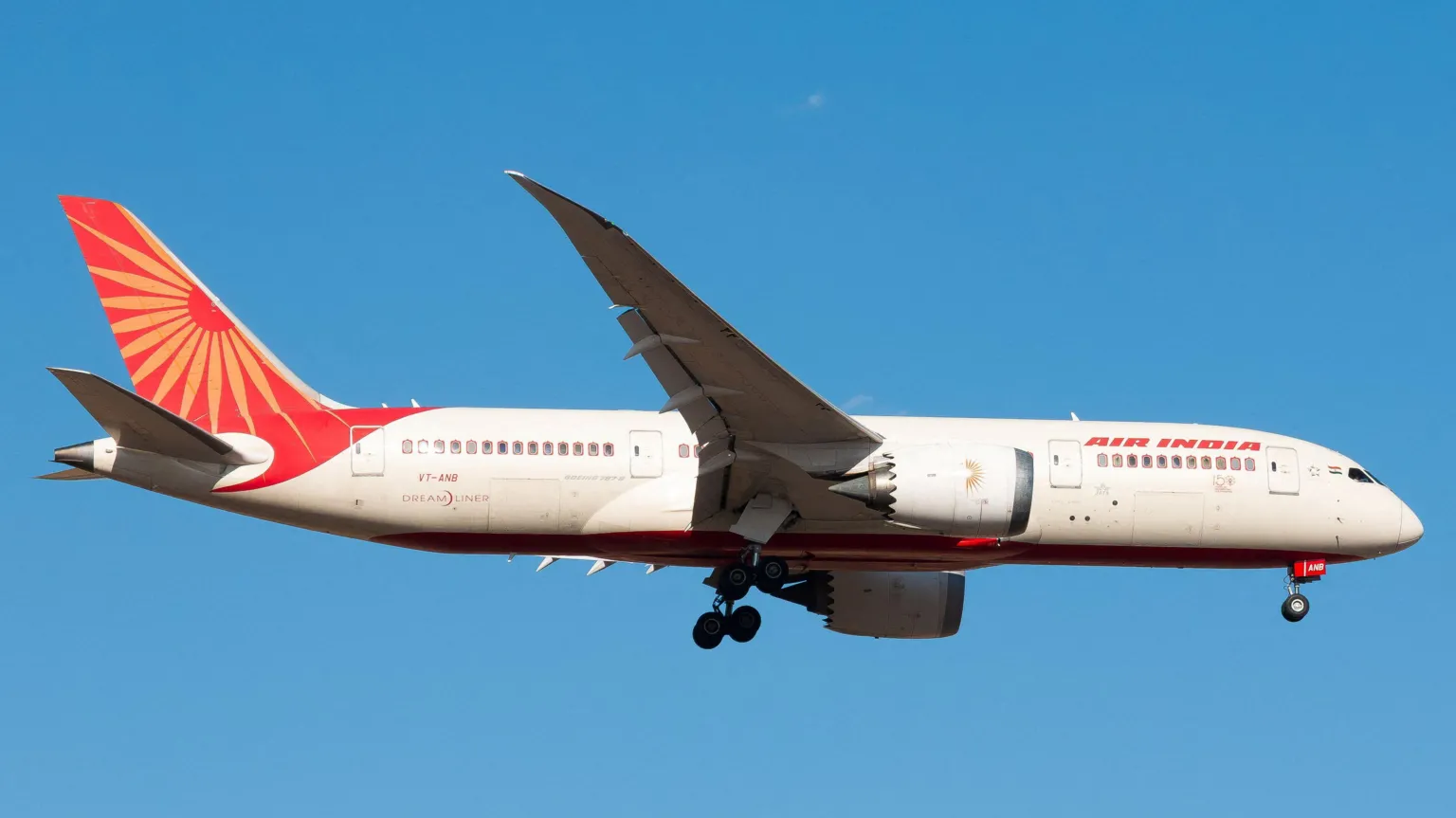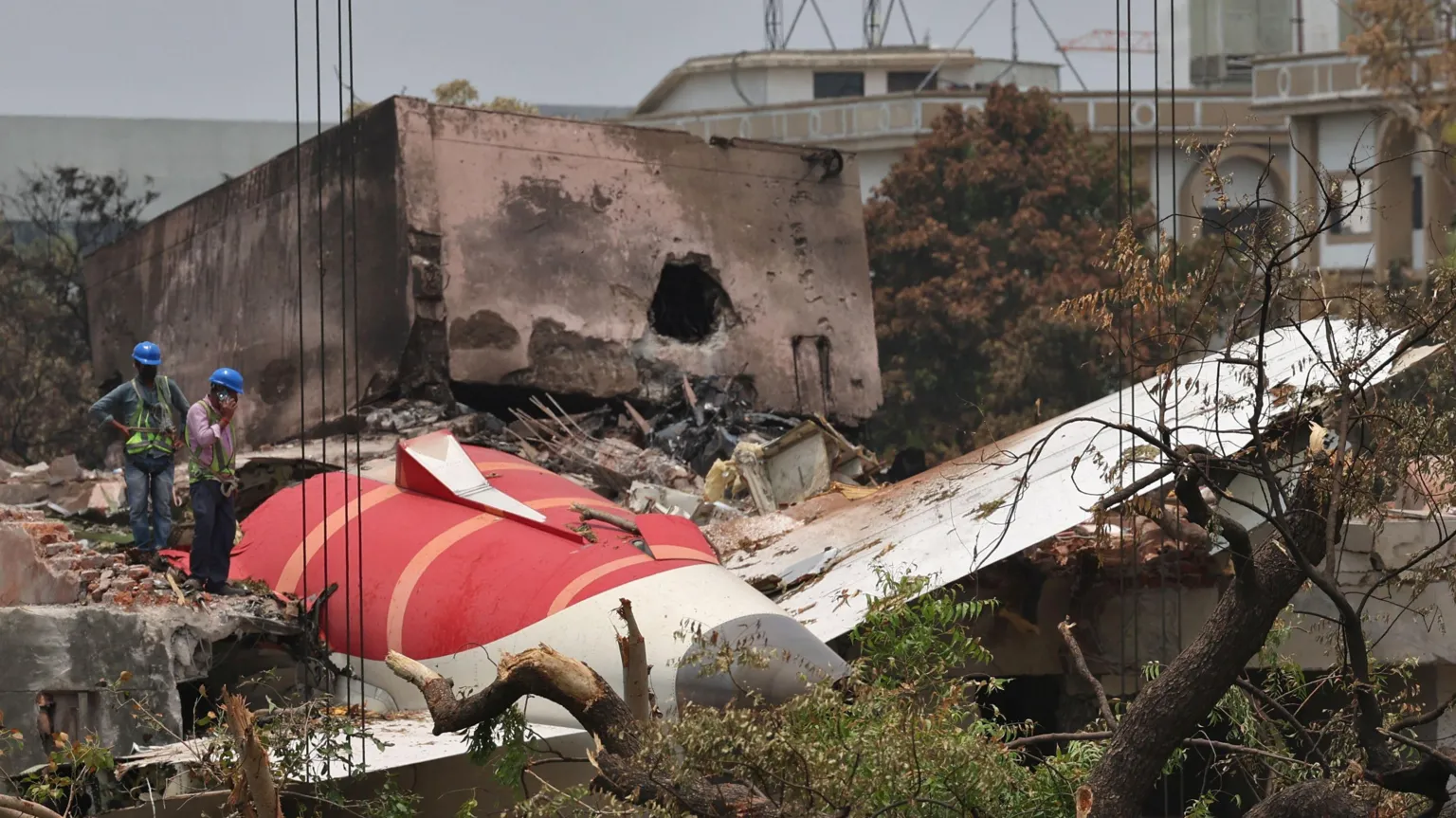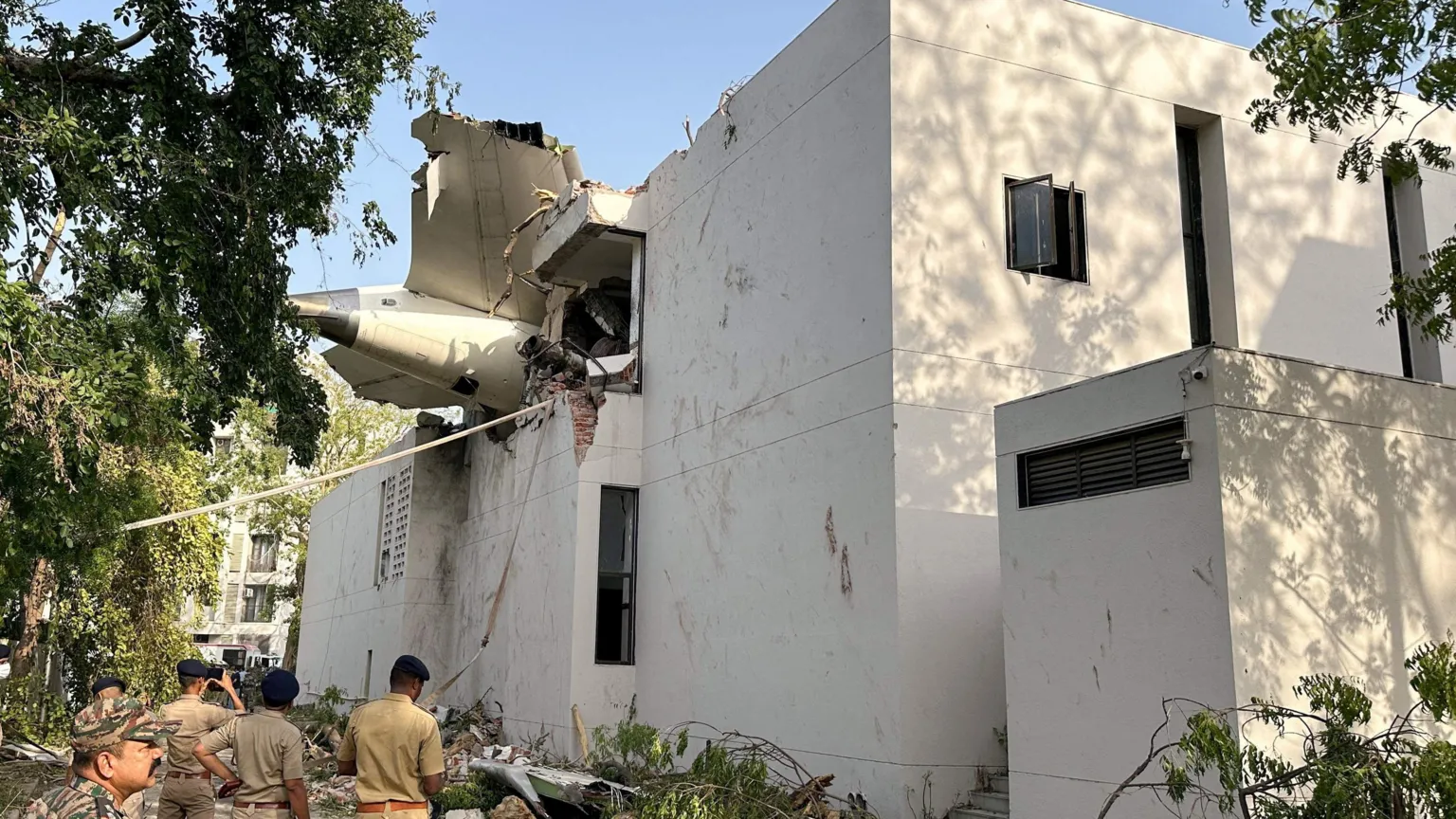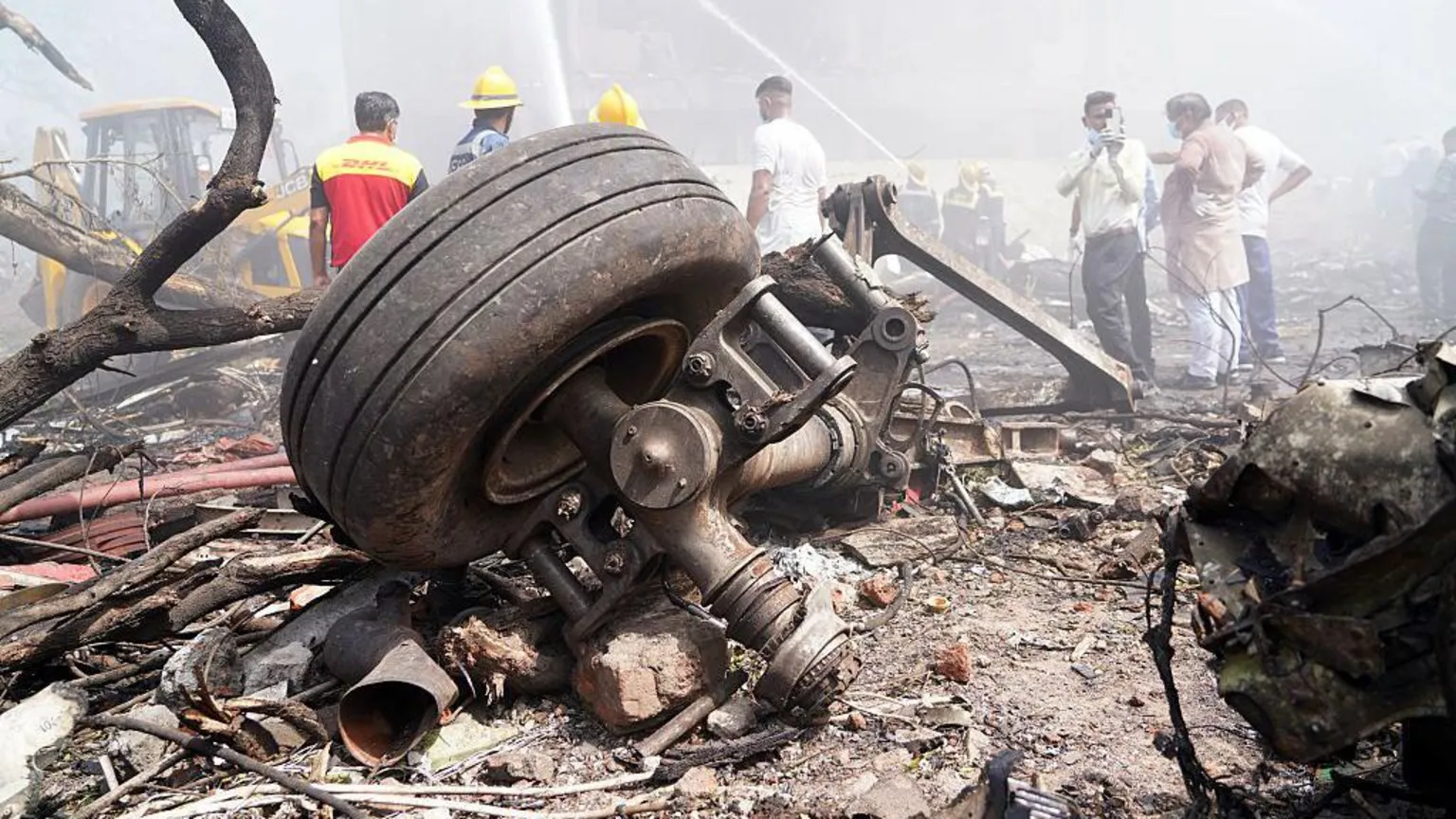
DEVELOPMENTS IN THE AIR INDIA CRASH INVESTIGATION
EL-ZION NEWS
Under 40 seconds.
That was the total time Air India Flight 171 remained airborne before it crashed into a crowded area of Ahmedabad—marking one of the most unusual air disasters India has seen in recent years.
Investigators are now faced with the grim responsibility of analyzing debris and retrieving data from the Boeing 787 Dreamliner's cockpit voice and flight data recorders to determine what went fatally wrong shortly after departure. According to international regulations set by the UN aviation authority ICAO, a preliminary report must be issued within 30 days, and a full report ideally within 12 months.

The aircraft, bound for London Gatwick and crewed by Captain Sumeet Sabharwal and co-pilot Clive Kundar, took off from Ahmedabad at 13:39 local time (08:09 GMT) on Thursday, carrying 242 people and nearly 100 tonnes of fuel. Moments later, the cockpit issued a mayday call—its final communication—followed by a sudden drop in altitude and a fiery crash.
What could have caused the Air India crash so quickly after take-off?
Captain Kishore Chinta, a former investigator with India’s Aircraft Accident Investigation Bureau (AAIB), described it as "the rarest of the rare" events—a controlled flight into terrain less than a minute after takeoff. “To my knowledge, nothing quite like this has ever happened,” he said.
Investigators are exploring several possibilities: Did both engines fail due to bird strikes or fuel contamination? Were the flaps not correctly configured, impairing lift on an overloaded aircraft in hot weather? Was a maintenance mistake made during servicing? Or did a cockpit error cut off fuel supply?
All scenarios are under consideration. Air crash investigations typically rely on triangulating wreckage evidence with recorded flight data to reconstruct the incident.
Every charred cable, broken turbine blade, maintenance document, and data point from the black boxes will be scrutinized. Several investigators noted that the engines may offer the first meaningful clues.
“You can tell from the damage whether the engines were generating power at impact—turbines fracture differently when spinning at high speed,” explained Peter Goelz, a former managing director of the U.S. National Transportation Safety Board (NTSB). “That’s the first clue to what went wrong.”
Turbines are essential rotating parts that extract energy to provide thrust.
“If the engines weren’t producing thrust, investigators have a serious case on their hands—and the focus will shift sharply to the cockpit.”
Details from the cockpit will be revealed by the Boeing 787’s Enhanced Airborne Flight Recorders (EAFRs), which Indian authorities say have been recovered.

These recorders collect a wide range of information—from pilot voice communications to background cockpit noise. Voice data comes from pilot microphones, radio transmissions, and ambient microphones inside the cockpit.
The data recorders also monitor the position of gear and flap levers, engine power levels, fuel flow, and activation of fire control systems.
“If the flight data recorder shows the engines were making full power, then the attention will move to the flaps and slats. If they are found to be extended as needed, then it becomes a very difficult investigation,” said Mr Goelz.
Flaps and slats help increase lift at slower speeds, crucial for takeoffs and landings by allowing an aircraft to fly slower without stalling.
“If [the problem leads] to a malfunction in the flight management control system, that would raise serious concerns—not just for Boeing, but for the entire aviation industry.”
The Boeing 787's flight management control system is a complex automated suite that governs navigation, performance, and flight guidance. It draws on multiple sensors to optimize flight paths and fuel efficiency.
Given that over 1,100 Boeing 787s have been delivered globally since 2011, investigators must determine whether this incident is an isolated failure or part of a wider systemic risk. “If it points to a system problem, then the regulatory bodies have to make some tough decisions very quickly,” Mr Goelz said.
So far, there’s no evidence suggesting error or fault by any party. India’s civil aviation ministry said a recent inspection of Air India’s Boeing 787 fleet—24 out of 33 jets reviewed—found “no major safety concern” and confirmed compliance with safety standards.
On 12 June, Boeing President and CEO Kelly Ortberg stated: “Boeing will defer to India's Aircraft Accident Investigation Bureau (AAIB) for information on Air India Flight 171, in line with UN ICAO protocol.”
Indian investigators will lead the analysis of the black boxes at the AAIB lab in Delhi, with assistance from experts representing Boeing, engine-maker GE, Air India, and Indian regulators. Additional support will come from U.S. and U.K. investigation teams.
“In my experience, teams can usually determine what happened fairly quickly,” said Mr Goelz. “But understanding why it happened can take much longer.”
The wreckage may also provide valuable insights. “Every part—wire, nut, bolt—will be meticulously collected,” said Mr Chinta.
Normally, wreckage is relocated to a secure facility, where it's laid out and reassembled to identify key components like the nose, wings, and tail. Depending on what the recorders reveal, a full physical reconstruction may not be necessary in this case.
Investigators note that the relevance of wreckage varies by case. For example, in the 2014 Malaysia Airlines flight MH17 crash, reconstruction of the aircraft’s nose section revealed shrapnel damage from a missile.
In this case, investigators will also test residual fuel, filters, lines, and valves to detect any contamination—something easily confirmed or ruled out, one unnamed investigator said. He also mentioned that the refueling equipment used before the flight had likely been quarantined and inspected.
Additional evidence will come from maintenance logs and historical fault data gathered from the airline and Boeing’s ACARS (Aircraft Communications Addressing and Reporting System), which transmits real-time aircraft performance information to both parties.
The team will also review previous flights made by both the aircraft and the crew, looking into technical logs, fault reports, and any corrective actions taken before the flight.
Pilot records—including licensing, training, simulator performance, and instructor evaluations—will be examined to understand how the crew handled scenarios like engine failures in training. “I reckon Air India would have already provided these records to the investigation team,” said Mr Chinta.

The service history of components replaced on the aircraft will also be scrutinized to detect any recurring issues or defects that might have played a role.
“These investigations are extraordinarily complex. They take time, but there will be early indicators of what likely went wrong,” said Mr Goelz.
One reason is technological advancement. “One of the first accidents I investigated in 1994 had a flight data recorder tracking just four parameters,” he recalled.
“Today’s recorders capture hundreds—if not thousands—every second. That alone has transformed the way we investigate crashes.”
Share News
Comments






